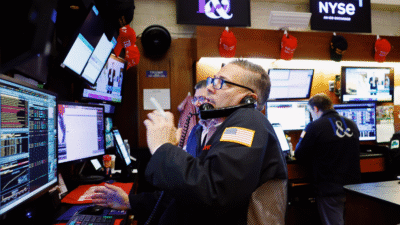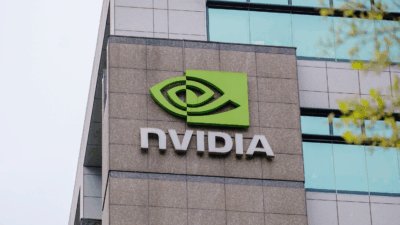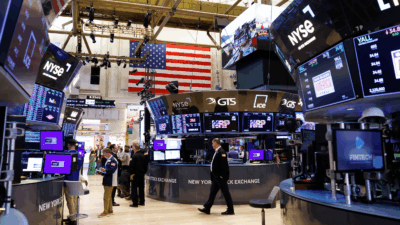Wall Street Spreads More Love Outside of Big Tech
Investors are pivoting away from the Magnificent Seven, favoring the rest of the S&P 500.

Sign up for smart news, insights, and analysis on the biggest financial stories of the day.
There’s a reason they don’t call it the S&P 7.
After spending the first half of the year betting big on the so-called Magnificent Seven tech firms — that’s Amazon, Apple, Microsoft, Google, Nvidia, Meta, and Tesla — traders are finally shifting gears. In fact, the S&P 500 has largely clawed back all of the losses from the early August mass sell-off, and it’s thanks almost entirely to the 493 non-Big Tech firms on the index, according to a Bloomberg analysis of market data published over the weekend.
Techtonic Shifts
As for the formerly magnificent ones, they’re more like the Meh Seven. Heavy spending on artificial intelligence and its infrastructure has eaten into tech earnings — relatively speaking. In the second quarter, the Magnificent Seven collectively saw profit growth of just 36%, down from 50% in the previous three quarters. Meanwhile, an ongoing regulatory crackdown has bedeviled Big Tech. The biggest target as of late has been Google, which finds itself in the midst of two high-profile antitrust cases: One alleging monopolistic abuse of the ad-tech industry kicked off last week, and another from earlier this summer already found monopolistic abuse in the search industry.
That’s led many traders on Wall Street to rotate into sectors now in the far-more mouthwatering life cycle stage of transitioning from earnings declines to earnings gains:
- Since the S&P 500 reached a 2024 peak on July 16, the Magnificent Seven have collectively slipped over 5%, according to Bloomberg’s index of the cohort, while the S&P overall has declined just 1%. Utilities and real estate stocks in particular have buttressed the index, both rising 11%.
- Traders on Wall Street are now pricing in the regulatory risks for Google parent Alphabet, down about 14% since the start of the third quarter. The tech giant is trading at roughly 19 times forward earnings, a discount compared to the rest of the S&P 500, per a recent Wall Street Journal analysis of FactSet data.
Cut and Run: The rally of the 493 could be taken as a sign that equities investors have a rosy view of the future. In fact, they might just be the most bubbly bunch on Wall Street, analysts said in another recent WSJ analysis. In contrast to equities traders’ spread-the-love optimism, interest-rate derivatives traders have priced in the Fed cutting interest rates from the current 5.25% to just 2.75% by the end of next year — indicating that they are expecting Jerome Powell to be responding to a recession.











